#LocalHistoryCork
Text
Goad Plans of Cork City!

The dedicated Cork City Libraries Local History website, Cork Past and Present, has recently had an interesting addition made in the shape of Insurance plans for the commercial heart of the City. The wide selection of maps details the changing landscape and businesses that filled the city centre from 1897 to 1961!
Cork City Libraries hold copies of seventeen editions of the Goad plans for Cork City, from 1897 to 1961. These are held in five bindings in our Local Studies and Learning Department. The ‘key plan’ on the first sheet of each edition provides a graphic outline of areas represented in more detail on maps 2-16 of each edition. Under the key plan (in PDF form in these webpages), a selective index of streets, buildings, and firms is included. The scale of the detailed plans is one inch to forty feet (1:480) on the original paper copies. Fire insurance plans were first drawn up in the late eighteenth century to provide risk information to fire insurance underwriters.

Charles Edward Goad, born in Surrey in 1848, moved to Canada in 1869, where he became a renowned cartographer and railway engineer. The firm of Charles E. Goad was established in Montreal in 1875 and became the leading producer of fire insurance plans for 1,300 places in Canada, before he returned to Britain in 1885 to produce insurance plans for the commercial sections of more than 100 towns in Britain and Ireland, along with surveying places in other countries.
Fire insurance companies had an interest in preventing fires to insured properties, and firefighters (often private) needed detailed information regarding access to water, routes to building, room arrangements, locations of doors & windows, thickness of walls, information on construction materials, type of roof, locations of combustible materials, water-works system, etc. Charles Goad died in Toronto in 1910. Goad insurance plans now provide an excellent information source for historians, geographers, architects, environmentalists and genealogists.
2 notes
·
View notes
Text
When JFK came to Cork | 28 June 1963
by Mary Horgan
This summer marks the 60th anniversary of the visit of President John Fitzgerald Kennedy, 35th President of the United States of America, to Cork. As part of his historic four-day trip to Ireland, five months before his assassination in Dallas on 22nd November 1963, he visited Wexford, Dublin, Galway, Limerick and Cork. JFK’s eight great grandparents had emigrated to America during the 19th century. Welcoming him back to the homeland of his ancestors was for so many, like welcoming one of their own home again.
Interestingly, a visit to Cork was not originally on the agenda, but anticipation rose two weeks before the president’s arrival in the country, when the Evening Echo reported that ‘Mr. Kennedy himself had asked specifically that Cork be included as part of his Irish itinerary’ as some of his ancestors had hailed from the county.

Evening Echo, 14 June 1963
But also, Cork people don’t like to be excluded and can be very persuasive; remember, how in 2011, Cork made certain that Queen Elizabeth II would not leave Ireland without visiting the city. At a meeting of Cork Corporation on 26 May 1963, it was agreed that the Freedom of Cork should be offered to President Kennedy. On 11 June, he was formally nominated and elected a freeman of the city of Cork, with the actual conferring to take place during his visit on 28 June 1963. This was the second time that a U.S. president became a Freeman of Cork; the first being, Woodrow Wilson, in 1919. As the day of the visit drew closer, the public learnt more about the planned itinerary through the local press. On 21 June, Lord Mayor Seán Casey, T.D. issued an appeal to employers to allow their staff time off work to welcome the U.S. President and requested that businesses and houses along the route of the motorcade would decorate their premises for the occasion. Sixty telephone lines and specialized wired photograph facilities for members of the world’s press were installed in the City Hall and 900 gardaí were allocated to be on duty during the Cork visit.
On the morning of Friday 28 June 1963, five helicopters left Dublin carrying JFK and entourage. Shortly after 10a.m. the sound of helicopters could be heard above the streets of Cork. Ten minutes later, the President landed safely on the square in Collins Barracks, on the north side of the city. The official welcoming party included Lord Mayor Seán Casey, Jack Lynch, T.D. who was Minister for Industry and Commerce at the time and Walter McEvilly, the City Manager. The combined pipe bands of the 4th and 12th Infantry Battalions played ‘The Boys from Wexford’ and ‘Kelly the Boy from Killane’.

President Kennedy inspects a Guard of Honour as he departs Collins Barracks
(Courtesy of Irish Examiner Archives)
The Presidential motorcade consisted of fourteen vehicles, including three buses for members of the world’s press and a Secret Service car – not a common site on the streets of Cork. An estimated 100,000 people, some carrying American flags, lined the streets, as the motorcade made its way down Summerhill, along MacCurtain Street, over Patrick’s Bridge, then along Patrick Street, Grand Parade, South Mall and over Brian Boru Bridge to the City Hall.

(The Irish Times, 29 June 1963)
The bells of Shandon rang out across the city, and it seemed that at almost every corner, musicians felt compelled to show their joy at the visit by taking up their instruments. The Irish Times reported that: ‘Rose petals, confetti streamers and ticker tape were strewn along President Kennedy’s path as almost 100,000 Leesiders roared a Céad Míle Fáilte, again and again’. Businesses had followed the Lord Mayor’s request to close and erected signs such as: ‘Closed, gone to meet President Kennedy’. In their excitement, sometimes the crowds surged forward, eager to shake JFK’s hand, make eye contact, clap him on the back, thank him for coming, while concerned Secret Service men looked on. But he was in no danger in this place, and he must have felt that because sometimes he even leaned forward from the car and brushed hands against the outspread fingers of people nearest the motorcade.

President Kennedy’s motorcade nears the top of Patrick Street
(JFK Library)
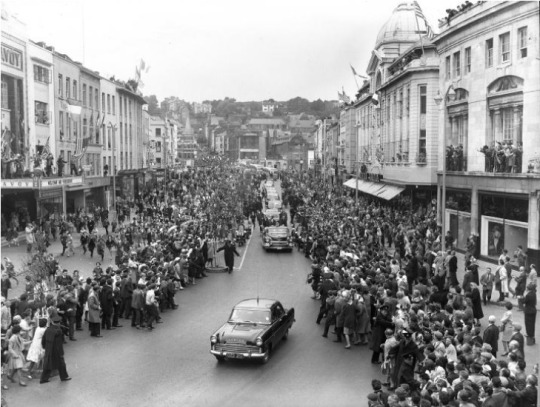
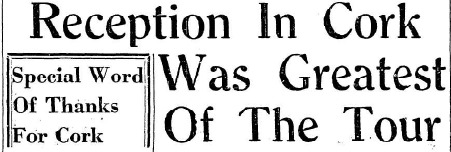
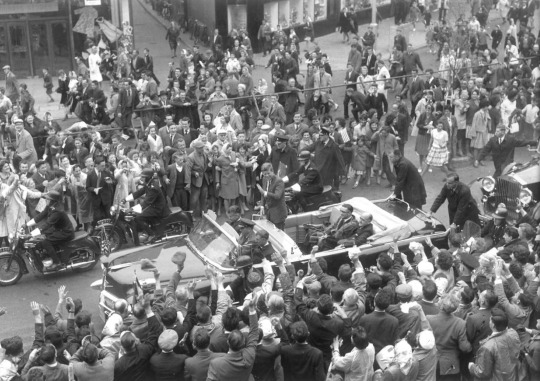
President Kennedy accompanied by Lord Mayor Seán Casey waves to cheering crowds as the motorcade makes its way along Patrick Street
(Courtesy of Irish Examiner Archives)

Evening Echo, 28 June 1963
When the motorcade finally arrived at the City Hall, 2,000 invited guests awaited the president inside the Concert Hall, where his entrance was greeted by a fanfare of trumpets from the Southern Command Band.
On behalf of the city, the Lord Mayor welcomed him with the following words:
‘Throughout its long history, Cork has received many famous visitors from many parts of the world but I can confidently say that no man has ever come within our walls who is more welcome than John Fitzgerald Kennedy, 35th President of the great republic of the west, leader of the powerful nation to whom we all owe so much’.

President Kennedy with his hands on the Freedom Casket as he accepts the Freedom of Cork in the City Hall
(Courtesy of Irish Examiner Archives)
President Kennedy accepted the Freedom Casket containing his Certificate of Freedom. Designed by the well-known Cork firm, Wm. Egan & Sons, it was made of solid silver, gilded in fine gold, mounted on a plinth of Connemara marble and engraved with shamrock, Celtic design, the Cork Coat of Arms, the U.S. Eagle Crest and the Kennedy family crest. The President’s concluded his eight-minute speech, which was relayed over loudspeakers to the crowds outside with the following words:
‘So I must say Mr. Mayor, that when I am retired from public life, I will take the greatest pride and satisfaction in not only having been President of my own country but a Freeman of this City.’

(Courtesy of Irish Examiner Archives)
This photo shows JFK leaving the City Hall en route to Marine One helicopter waiting at the Marina Park, Victoria Road, which is now known as Kennedy Park in his honour. A crowd of about 5,000 had made their way there with some running in under the whirling blades of the helicopter. The pilot had a difficult job to clear a path through the crowd before executing a take-off which had him hovering with the wheels almost touching the heads below.
The Irish Times reported:
‘A White House Press Corps man wiped perspiration from his brow and said: “Gee, that was the most dangerous take-off I’ve ever seen in many years of covering American Presidents. Cork outdoes anything I’ve seen before. I thought the mobbing in Berlin was bad, but now I know better. My message home will be of this one helleva hooley we had in Cork.’
JFK’s visit to Cork was a short one, but in the words of The Cork Examiner:
‘Cork indeed will remember, and President Kennedy will never forget’.
Sources consulted for this post may be viewed at the Local Studies & Learning department, Grand Parade Library, Cork:
Harvey, Dan. & White, Gerry. The Barracks: A History of Victoria/Collins Barracks, Cork. 1997.
Tubridy, Ryan. JFK in Ireland: Four days that changed a president. 2010
Quinlivan, Aodh. The Freedom of Cork: A Chronicle of Honour. 2013.
The Cork Examiner
Evening Echo
The Irish Times
Irish Examiner Archives
0 notes
Text
100 Years Ago Today | June 16th 1923

Cork District Sessions
Denis Sexton, Clarence Street (now Gerald Griffin Street), was charged with the larceny of a bag of onions on Patrick’s Quay, the property of the Cork Steam Packet Company. Sergeant Mullen stated that he arrested the accused, who made the following statement, “I went to the Steam Packet, I thought there were six bags and four cases to collect”. “I said to the checker, ‘sign me for this’ and produced an order. When I went up to the quay, I found it was five cases and five bags on the boat and when I found out my mistake I left one at Morcelli’s with no intention of selling it. I was going to take it back again. That is all I have to say”. Sergeant Mullen said he was still making inquiries and hoped to procure enough evidence to connect the accused with the offence. He accordingly applied for remand. Mr. O’Connor, representing the defendant, said he was a respectable young man with ten years in the same employment. Bail was fixed at £10.
South Infirmary Committee
Dr. Donovan stated at the South Infirmary Management Committee meeting that the water supply to the hospital tasted badly and that he forwarded a sample to Professor Moore for analysis. Professor Moore reported that it was quite unfit for drinking or domestic use. Mr. Wallace said this was a very serious matter. Dr. Donovan said the water is filtered before being supplied to the patients. Canon Murphy, committee chairman, said it would be well if the water was boiled before use. It was agreed to bring the attention of the Corporation to Professor Moore’s report and request steps be taken to improve it. One tender was received for painting the institution. It was from Mr. Lingwood, French’s Quay, for £191 10s. and was accepted. Mr. Wallace voiced the committee’s gratitude for the money allocated to the hospital from the Hospitals Sweepstake. Only for the efforts of Mr. Duncan, a fellow committee member, the amount would not have been as satisfactory as it was. Mr. Wallace expressed the committee’s regret at the loss of the services of the Protestant Bishop and the Dean. Canon Murphy agreed that it was the committee’s desire that the distinguished clergymen reconsider their decision and return to the hospital board.
Kiss of Warm Rain
The May-June cold spell of bitter, broken weather has left its mark on tree, shrub and meadow. The satisfying profusion of a leafy June is absent. Ash, beech, oak and elm do not bear their full lusciousness. The flowers are blooming, but in a wistful, half-hearted way. Normally fertile soils are hard, parched and cold and our young spring crops have been hard hit by this bitter, boisterous weather. Delicate potato, grain and orchard plantations are late and crabbed in their growth. A few days of soft, heavy rain from the Atlantic will amend matters. Weekend sport-makers may not love the warm kiss of the misty rain but to one born of the soil no weather conditions in late spring or early summer are more welcome – the fulsome, harvest-growing rain from the sea.

Diamond Jubilee Celebrated
Sister Mary Camillus celebrated the 60th anniversary of her profession as a Sister of Mercy at St. Marie’s of the Isles last Saturday. The Rev. Dr. Cohalan, Bishop of Cork, presided and the occasion was one of great rejoicing among the members of the community. All present availed of it to offer Sister Camillus the tribute of their veneration and affectionate esteem. The only daughter of Dr. John and Mrs. Burke of Bantry, Sister Camillus lost her father in her infancy and came with her mother to reside in Cork. She received her education at Laurel Hill, Limerick and Clapham, London. Still very young, she entered St. Marie’s of the Isles in 1860 and was professed on June 9th 1863. In the House of Mercy Sister laboured for 40 years, during which time hundreds of girls learned from her the truths, duties and beauties of the Catholic faith before going on to struggle for sustenance and position in every land. The greatest tribute to the work of this holy nun is contained in the numerous letters which have come back to her from all over thanking and blessing her.
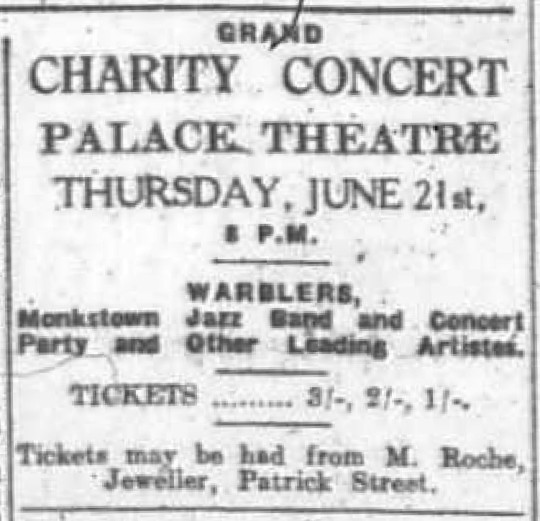
Blackrock vs. St. Finbarrs
There is no need to go back on the circumstances which led to the falling through of last year’s County Championship between these two sides. Suffice to say a very regrettable hitch led to a walkover for the Blues and intense disappointment to thousands of followers of the national code. Recompense arrived and an enormous attendance witnessed the old rivals meet in the semi-final of the Henebry Cup. Both sides were fully prepared for the test and there was no doubting their determination to put forth their best effort to win. The Blues put up a big fight but it was somewhat short lived. Their opponents came through the ordeal of the first-half some points to the good and, on the resumption of the struggle, there was really but one team standing, the Rockies. Their hurling was marked with unmistakeable rigor and mastery and at the long whistle Blackrock emerged from the arena with a substantial winning score. Though feeling was uncommonly high, both teams, to their credit, fought out the issue in a sporting spirit. There was rather too much partisanship displayed on the sideline which the players, very properly, ignored. I have to say unpleasant things of the gate arrangements. These were decidedly out of joint for a contest in which such widespread interest was evinced. With anything approaching even ordinary arrangements the gate takings would have been acceptable to even the College authorities, which is where the final against Sarsfields will be played.
0 notes
Text
Cork History | The Sinking of the Lusitania
by Michael Lenihan

Image 1. Lusitania Michael Lenihan Collection
In April 1915, the German Embassy in Washington issued a stark warning to passengers, that the waters around Great Britain had been declared a war zone and that any passengers commencing the Atlantic voyage in ships flying the flag of Britain or her allies would be at risk. This warning was placed in over 50 American newspapers. However these notices were ignored and the Lusitania left America for Britain on 1 May 1915 with nearly 2000 passengers. She also carried war material which were listed on the ships manifest, this included 4 million rifle cartridges, 5,000 empty shell cases and over 3,000 non-explosive fuses. The Lusitania was sunk by a torpedo fired from the German U-boat U 20 on 7 May 1915 off the old Head of Kinsale. The log of the U-boat recorded that only one torpedo had been fired at the Lusitania, however many people to believed that two were fired. The ship sank in only 18 minutes and a second explosion was heard by survivors which later led to rumours that high explosives were secretly carried on board the Lusitania. The total number of casualties was 1,198.
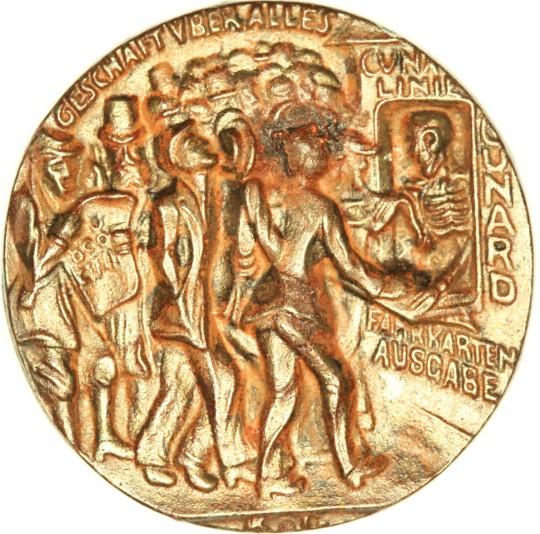
Image 2. Lusitania propaganda Medallion. Michael Lenihan Collection
In August 1915, German artist Karl Goetz cast a commemorative medal depicting the sinking of the Lusitania. He intended it to be a metallic political cartoon. On one side the Lusitania was shown sinking by its stern with artillery pieces and airplanes on the deck. The captions translate as: “No Contraband Goods – The Liner Lusitania Sunk by a German Submarine – 5 May 1915.” Unfortunately he recorded the wrong date. The reverse shows a skeleton selling tickets to long lines of unwary passengers, captioned (translated): “Business Above All. A newspaper headline warns: U-Boat Danger.”
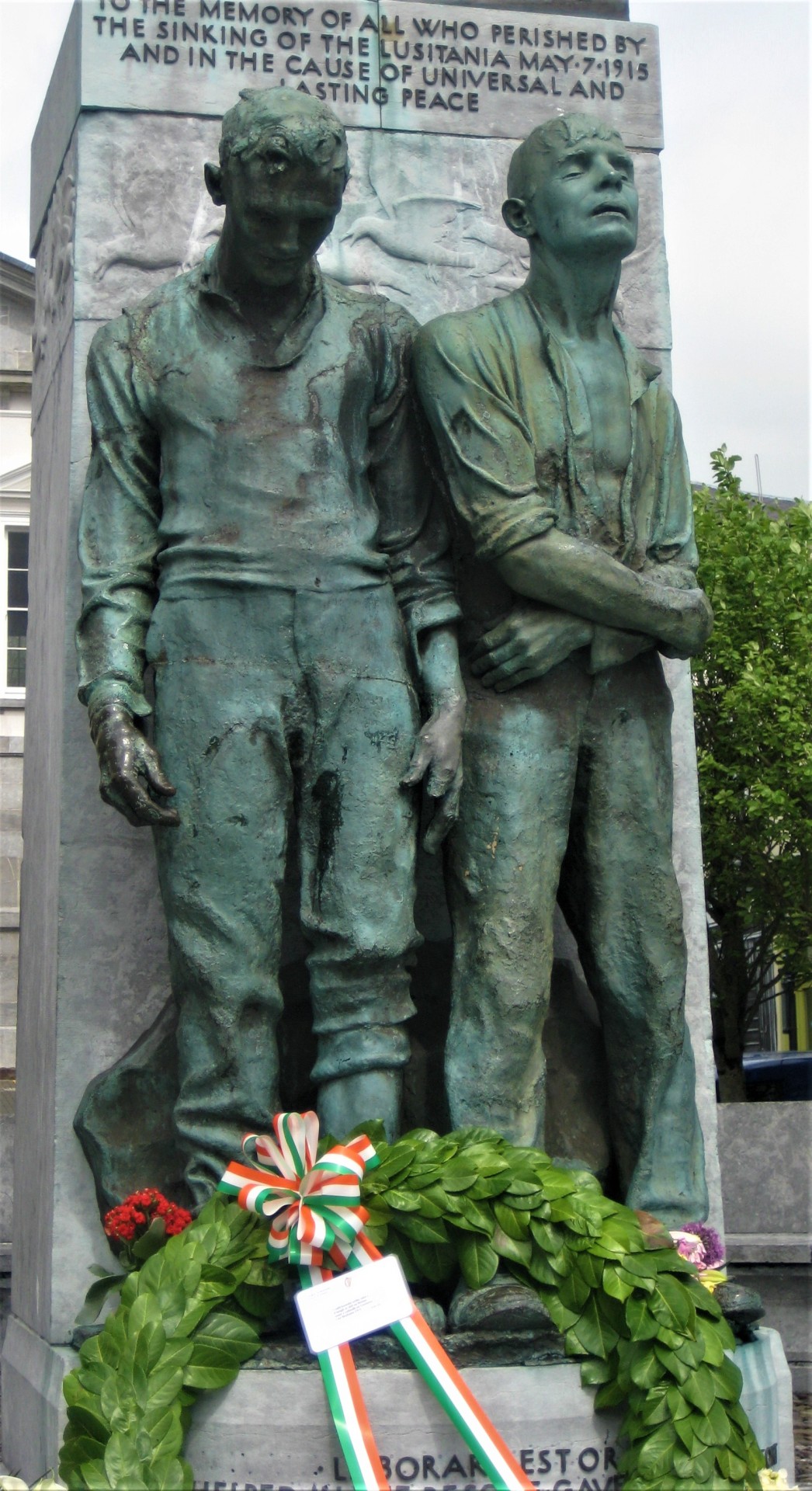
Image 3. Lusitania Monument Cobh Michael Lenihan
The British hastily exploited the German version for propaganda purposes. British Naval Intelligence ordered about 250,000 copies struck with the May 5 date and sold them through the Lusitania Souvenir Medal Committee to the public at one shilling each. The discrepancy in date may have been a genuine error but it was interpreted as it being a clear indication that the sinking was pre-planned and not just one of the vagaries of war. British propagandists made the most of their opportunity to discredit Germany. These were originally sold for a shilling each at Selfridge’s in 1916 with proceeds going to the Red Cross and St. Dunstan’s Blinded Soldiers’ and Sailors’ Hostel. Many of the British copies are readily found today, as for the German version these are very rare and extremely valuable.
4 notes
·
View notes
Text
Cork History | St. Peter’s Church
by Michael Lenihan
The oldest part of the Crawford Gallery once housed the former Customs House which was one of the oldest civic buildings in the city. The northern wing was built of red brick and limestone and was constructed in 1724. It is likely to have been the work of a Dutch architect as it is in the Dutch style and as such is one of the few relics of the close mercantile connections between Cork and Amsterdam in the eighteenth century. An earlier Custom House had existed on the same site c. 1680 on the then known East marsh. It was demolished in 1724 as it was considered to be too small for the work it entailed. In 1750 the Historian, Charles Smith describes the Old Custom House as a large elegant building which consisted of three storeys and the angles, door case and window frames were of cut stone as was the cornice and balustrade forming a parapet. It was of the Doric order and was then considered the work of Sir Ed. Lovett Pearce Surveyor to the British Government.

St Peter’s Church 1633
Smith describes the internals of the building as having several offices for the management of the affairs of the customs and excise of the port, together with an elegant apartment for the collector who resided there. Located on the other side of the building were the store houses, while the quayside was complete with cranes and other utilities for discharging goods. Sir Richard Cox was the collector for the year 1750.The Custom House was donated to the Royal Cork Institution in June 1832, but it was then in a very poor state of repair. Several bodies in Cork had applied for the use of the building including the Governors of the South Charitable Infirmary for its use as a general hospital. Other interested parties were the paupers of the Green Coat Hospital. Some Cork barristers also requested a room so that they could register freeholders of the city.
The building was eventually extended with Galleries and rooms to form the Crawford School of Art. This new extension was a clever integration of two separate buildings dating from the eighteenth and nineteenth centuries. The maritime amenities in the city were moved down river to Lapp’s Island where a new Custom House was erected in 1818.

St Peter’s Church 1960s
As early as the twelfth century St. Peter’s Church located at the North Main Street was one of the most important ecclesiastical sites in the medieval city of Cork. This area is steeped in history. The earliest map of Cork namely the Tower of London Map c.1545 clearly shows St. Peter’s Church, and its adjoining laneway with tower in situ. The early church was a gothic structure containing several small chapels and oratories. Its historic importance is recorded by such major events as the election of the Lord Lieutenant of Ireland. Francis Tuckey in his Cork Remembrance of 1837 chronicles that in 1381 the Bishops of Ossory, Cork, Cloyne, Lismore and Waterford and Limerick, the Earl of Ormond and Mayor of Cork assembled at St. Peter’s Church. The unanimous decision of the delegation was the election of John Colton Dean of St. Patrick’s and Lord Chancellor of Ireland to the position of Lord Lieutenant of Ireland. Unfortunately by 1683, the church had fallen into some disrepair and the old belfry was taken down and completely rebuilt.
In 1750 when the historian Charles Smith visited the church, he recorded gravestones dating back to 1500. The most influential of Cork families were buried in St. Peter’s graveyard over the centuries. The oldest existing headstone dates to 1683 recording the death of William Rogers. In the year 1753, it is recorded that Francis Taylor was buried in St Peter’s graveyard to the rear of the church at Grattan Street and in the following morning much to the astonishment of a passersby, he was found sitting up in his grave, his cap and shroud torn to pieces. His coffin was broken, one of his shoulders much mangled, his hands were full of clay and blood was observed running from his eyes. This was the result of being buried alive and he was extremely lucky to survive his entombment. The name Francis Taylor appears again in the burial register of 19th September 1776, could this be the same person who had survived an earlier internment 23 years previously? In a further coincidence, a Joseph Taylor published a book in 1816 entitled ‘The Danger of Premature Internment, Proved From Many Remarkable Instances Of People Who Have Recovered After Being Laid Out For Dead, And Of Others Entombed Alive.” This book was a best seller taking advantage of the wide spread fear of premature burial. Is it possible that this author may have been a relative of the Joseph Taylor who was buried alive in Cork in 1753?

In 1782, the old church was demolished to make way for a new building. Whilst St Peter’s was being rebuilt, the railings and figures on the Deane family vault were removed for safekeeping. Unfortunately, for the Deane family some opportunistic thieves struck and stole the leaden coffins of Sir Matthew Deane and his lady wife. The new church was completed in 1788, but the foundations could not support the heavy metal belfry and it had to be removed. By 1816 the church walls had bulged considerably and the parishioners considered it unsafe to attend service. Down through the years many modifications were carried out to strengthen its walls and foundations and having served the people of Cork for over 800 years St. Peter’s was deconsecrated in 1949. After its deconsecration it was utilised as a warehouse by the Munster Furniture Company for storing furniture, but it was badly neglected and heading towards dereliction. Fortunately, it attained a new lease of life when it was restored and it is currently home to St Peter’s Exhibition and Event Centre.
5 notes
·
View notes
Text
Cork History | Christ Church
by Michael Lenihan

Image courtesy of Michael Lenihan
The site of the church at Christ Church Lane is one of the oldest inhabited parts of the city and probably dates back to the Viking era. Records exist that date the earliest parish church of the Holy Trinity to 1185 and several churches have been built there over the centuries. The present church was completed in 1720 as the previous building was badly damaged during the siege and was demolished in 1716. The present building was designed by the architect John Coltsman and the tower rose one hundred and thirty feet above the city. The building costs were paid for by a tax of one shilling per ton on all coal and culm brought into the city. The steeple was completed in 1726, but because it was built on a poor foundation it sunk completely on one side. This subsidence was to be an ongoing problem as the church had to be taken down as far as its roof after its rebuilding in 1748. The historian Charles Smith refers to the church in 1750 and states that it was referred to as the King’s Chapel. Various accounts of the church in the late 1700’s refer to its leaning steeple and an old Cork saying was ‘All to one side like Christ Church’. The Lord Chief Justice Willis described the leaning tower in danger of falling on three or four houses and was ‘A terror to everybody that passed along the street’.
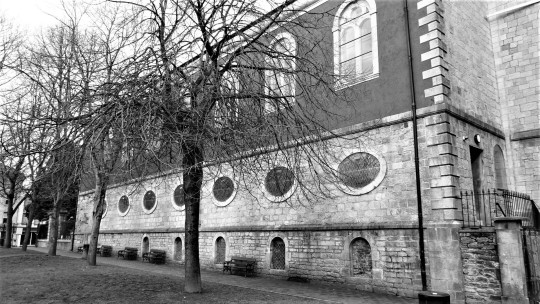
Image courtesy of Michael Lenihan
Various improvements and modifications were made and in 1825 new plans were submitted by the architect George Pain but this was rejected as being too costly. The front and entrance were added in 1827 at a cost of £3500 and 6s. In 1828 the interior was totally renewed. Unfortunately, during the zealous rebuilding of 1828 every memorial was dislocated and many were destroyed. The church was not confined to being just a place of worship; it was also a public place of punishment. In November 1729 it is recorded that a pair of stocks were to be constructed and theses were used to punish offenders on the Lords day during the times of divine service. The location of the stocks is given as ‘Ye said stocks be placed by ye gate of ye said church’. The stocks survived for a period of thirteen years as another entry for August 1742 records that the sum of £2 and eight pence was paid to Mr. Cooke for a pair of new stocks and for other joinery work within the parish of Christ Church. The Church was deconsecrated in 1978 after centuries of worship and it then appropriately housed the Cork Archives Institute until 2005. In 2011 it was totally renovated as the Triskel Arts Centre providing live music, cultural cinema, visual art and literary events.
2 notes
·
View notes
Text
Cork History | St Luke’s Church
by Michael Lenihan
The first church at St Luke’s Cross was a modest Gothic designed limestone building erected in 1837. It was designed by the renowned architects and brothers James and George Pain. The church was built as a chapel of ease for St. Anne’s Shandon. As the number of worshipers swelled, St. Luke’s became a parish in its own right. The original old church at St. Luke’s had become unfit for purpose so it was decided to create a new more fitting place of worship to accommodate its parishioners. The Reverend Mervyl Archdall commissioned the architects Sir John Benson and William Hill to design plans for its construction in 1873. The new more spacious building would accommodate one thousand persons and was consecrated on 14 January 1875. It was the first church to be erected following the Act of Disestablishment in 1869.

Image1. Irish Builder 1873 sketch of St. Luke’s Church. Courtesy Cork City Library.
Unfortunately, just 12 years later, on the 9 February 1887 the building was observed to be on fire at 6a.m. Chaos followed as the keys to the church were missing and the main door had to be forced open with the aid of a school seat. By this time the fire was totally out of control and all that could be done was to rescue the registers and other valuable documents. Subsequently, the spire was purchased by Canon Holland of Innishannon for the bargain price of £250. It was removed stone by stone, carted to the railway station and conveyed the sixteen miles by rail. The transport costs to its new home must have been astronomical. The recycled stone spire still stands in pride of place on St. Mary’s church in Innishannon, a memorial to the long forgotten fire at St. Luke’s.
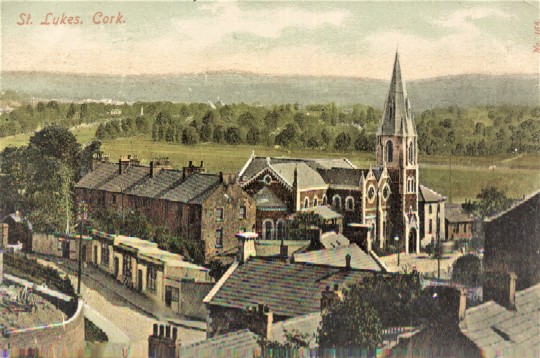
Image 2. St. Luke’s Church and surrounding area 1906. Courtesy Michael Lenihan
The present St. Luke’s church was designed by William Hill and it was consecrated on the 8 February 1889. The final service was preached by the Rev Brian O’Rourke on Sunday 2 March 2003 to the remaining tiny congregation of just thirteen parishioners. Unfortunately, for many years it lay idle and neglected until it was purchased by Cork City Council. Luckily, the church received a new lease of life as a live music venue. In August 2015 the first series of concerts “Live at St. Luke’s” began with artists such as Mary Black, Mick Flannery, Panti Bliss and Little Green Cars. Its beautiful acoustics, combined with its wonderful stained glass windows and spacious environment creates a unique live experience which should ensure its future for many years.
2 notes
·
View notes
Text
Cork History |Beamish and Crawford Brewery
by Michael Lenihan
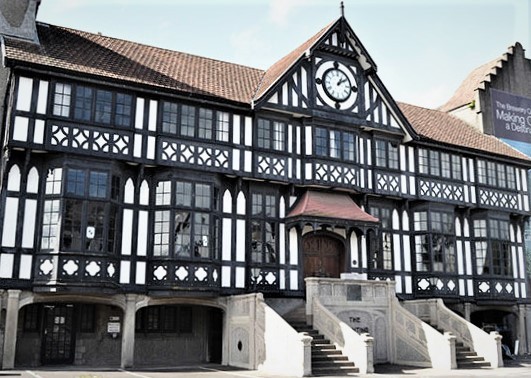
Image 1. The facade of Beamish and Crawford’s Counting House. Courtesy Michael Lenihan.
An early deed of 1667 refers to a George Sym’s who had lately purchased a dwelling house, malt house and a brew house in the city of Cork. The brew house was located in the parish of the Holy Trinity and was located near the South Gate Bridge. This is probably one of the earliest brewing references to the site of the Beamish & Crawford Brewery. It is believed that the history of brewing on this site could date back to the 1500s. The title deeds of Beamish and Crawford date to 1792, but they refer to Allen’s Brewery which existed on the South Main Street site in 1715. The Allen’s were very influential merchants in Cork, and John Allen is recorded as Mayor of the city in 1713. The family also had the distinction of having Allen’s Lane named after them, this was eventually incorporated within the Beamish and Crawford site.
William Beamish and William Crawford were Cork merchants and they made their money by importing beer into Cork from the London breweries. Tradition has it that having placed a large order with a London brewery, bad weather interrupted their supply. This left the thirsty natives of Cork without their favourite tipple, so they decided to purchase their own brewery and have a supply right on their doorstep. In 1791, Edward Allen had died, and his property was put up for sale. Allen had been the owner of the city’s largest brewery producing some 13,000 gallons per year. Beamish and Crawford purchased this ready-made brewery and began trading as the Cork Porter Brewery. As time went by the brewery was enlarged and modernised and, in the early 1830s, it had the distinction of being the largest brewery in Ireland.
The two partners concentrated on the provincial markets, unlike Guinness who had a huge export market. But Father Mathew’s Temperance campaign of the 1840s had a devastating effect on the drinks market. The number of small local breweries in the city had been decimated, reduced from eighteen to six. In its heyday, the brewery accounted for the payment of 12½ per cent of the city’s rates, an enormous sum. By the late 1850s, the brewery had bought out some of the remaining smaller concerns. This strategy combined with the purchase of tied houses namely pubs which sold only their products strengthened its position. By 1860, the Beamish and Crawford site covered an area of five acres. Fortunately, for Beamish and Crawford, the Guinness brewery had concentrated on the export trade leaving them to their own devices.

Image 2. Beamish & Crawford Coopers working in natural light 1932. Courtesy Michael Lenihan.
Arnott’s brewery was purchased by Murphy’s in 1901 and it was closed shortly afterwards increasing their tied house share by about one hundred and fifty public houses. Beamish and Crawford were not slow to react; they purchased their close competitor Lane’s Brewery, (est. 1758), on the South Main Street acquiring their tied houses. At this time both breweries had the monopoly of the city trade, accounting for about one half each. It was quite ironic that with the 2008 takeover of Scottish & Newcastle, the brewery passed into the hands of its main Cork-based rival Heineken International. In December 2008, it was announced that the Beamish and Crawford brewery was to close in 29 March 2009 with the loss of 120 jobs. Sadly, 217 years of a Cork brewing tradition had come to an end. Fortunately, Beamish stout is still brewed in Cork today albeit at the home of its former rival Murphy’s now Heineken Ireland, Leitrim Street.
2 notes
·
View notes
Text
Cork History | The Old Cork Custom House
by Michael Lenihan
The oldest part of the Crawford Gallery once housed the former Customs House which was one of the oldest civic buildings in the city. The northern wing was built of red brick and limestone and was constructed in 1724. It is likely to have been the work of a Dutch architect as it is in the Dutch style and as such is one of the few relics of the close mercantile connections between Cork and Amsterdam in the eighteenth century. An earlier Custom House had existed on the same site c. 1680 on the then known East marsh. It was demolished in 1724 as it was considered to be too small for the work it entailed. In 1750 the Historian, Charles Smith describes the Old Custom House as a large elegant building which consisted of three storeys and the angles, door case and window frames were of cut stone as was the cornice and balustrade forming a parapet. It was of the Doric order and was then considered the work of Sir Ed. Lovett Pearce Surveyor to the British Government.
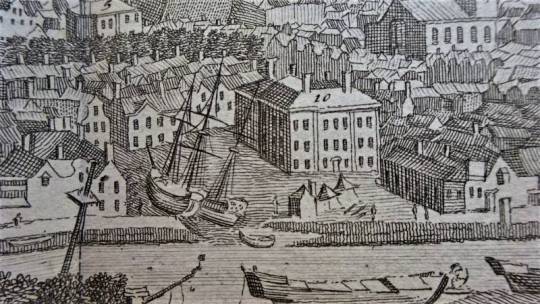
Smith describes the internals of the building as having several offices for the management of the affairs of the customs and excise of the port, together with an elegant apartment for the collector who resided there. Located on the other side of the building were the store houses, while the quayside was complete with cranes and other utilities for discharging goods. Sir Richard Cox was the collector for the year 1750.The Custom House was donated to the Royal Cork Institution in June 1832, but it was then in a very poor state of repair. Several bodies in Cork had applied for the use of the building including the Governors of the South Charitable Infirmary for its use as a general hospital. Other interested parties were the paupers of the Green Coat Hospital. Some Cork barristers also requested a room so that they could register freeholders of the city.
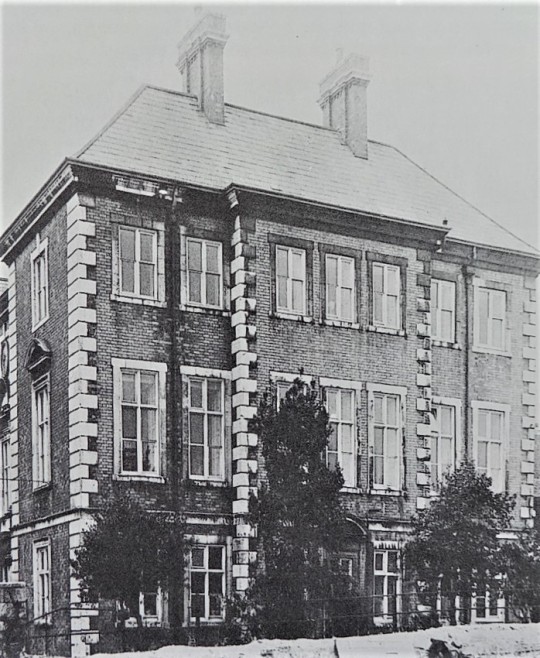
The building was eventually extended with Galleries and rooms to form the Crawford School of Art. This new extension was a clever integration of two separate buildings dating from the eighteenth and nineteenth centuries. The maritime amenities in the city were moved down river to Lapp’s Island where a new Custom House was erected in 1818.
3 notes
·
View notes
Text
Cork History | Callanan’s Tower
by Michael Lenihan
Michael Callanan had his famous tower, gardens and concert hall completed at Tower Hill off Friar’s Street by 1865. This significant tower is listed in The National Inventory of Architectural Heritage as a “detached square-profile four-stage crenellated tower, built c.1861. Roughly dressed stone and brick walls with string courses. Square-headed and round-arched openings. Roughly dressed stone boundary walls. The Tower Gardens were laid out by Mr. M. Callanan in the 1860s and this tower formed the centre piece of these interesting grounds. Though the gardens are now built on, and the other related structures have been demolished, the tower remains an interesting reminder of the civic amenity which was created in this area by Callanan. Located on an elevated site, the tower is visible from many areas of the city and is a notable addition to the skyline”.
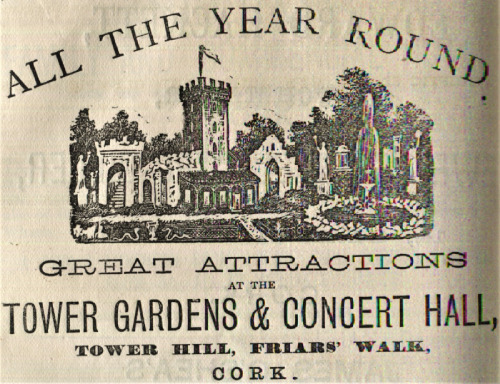
He is listed in Henry & Coghlan’s Directory of 1867, as a grocer, wine and spirit dealer at the Tower, 21 Cat Lane and 23/24 Abbey Street South. By 1871 his famous attraction was very much in vogue as he was advertising its spacious concert hall. Not content with limiting his attractions he was also offering athletic sports, gymnastics, Olympic Games and horse racing to his patrons. Cricket, archery, lawn billiards, croquet, bowls and an open-air gymnasium are on offer over the several acres of leisure land. Wines, ales, spirits, tea and coffee were just some of the refreshments provided. Beamish & Crawford porter was pumped from underground vaults, facilitating the retention of its coolness and superb flavour.
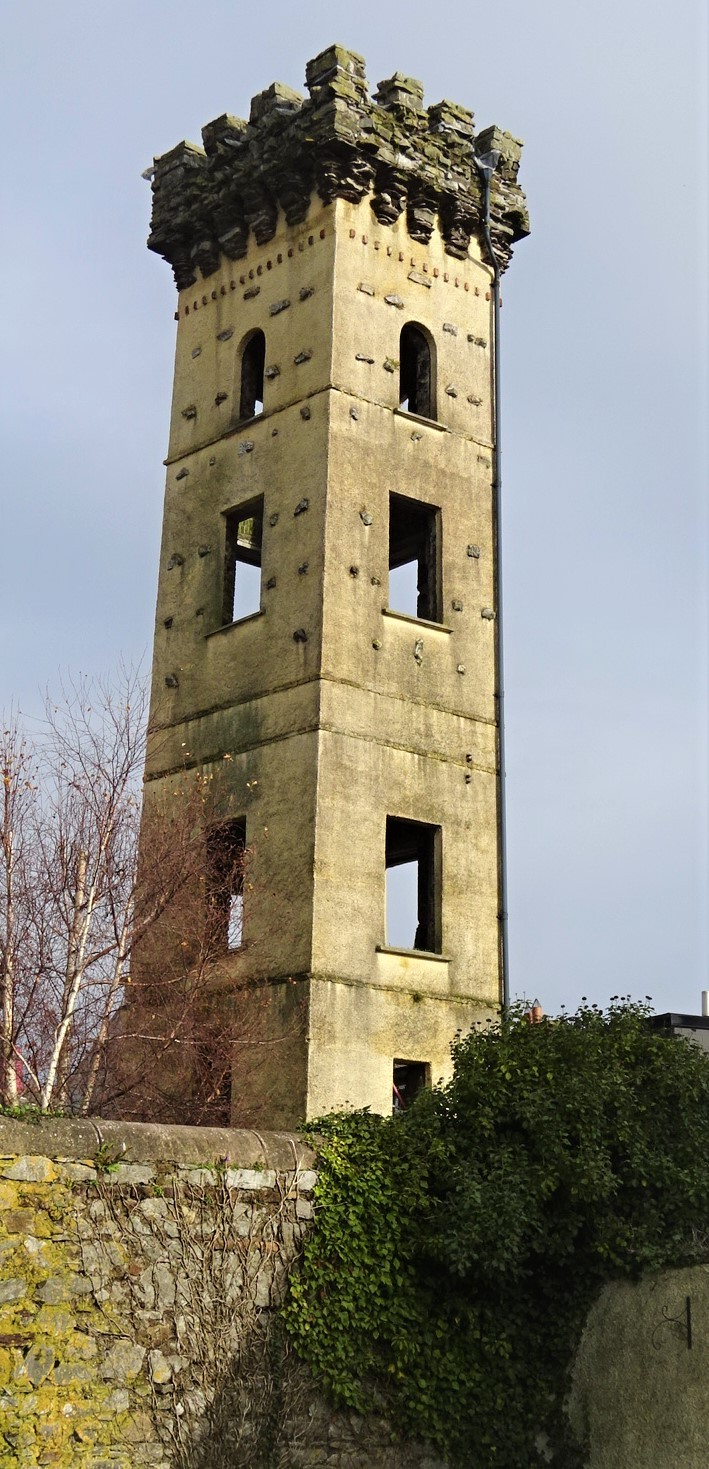
The Proprietor stated that he reserved the right to exclude disorderly or objectionable persons. Unfortunately his attractions became a magnet for the wrong sort of clientele, drinking and promiscuous behaviour became the order of the day, and the project was denounced by the local clergy and this undoubtedly contributed to its closure some years later. His grandiose plans had reduced him to insolvency, his business interests had evaporated. He was now residing at no 1, Friar’s Street in 1876, his only property interest in the city.
1 note
·
View note
Text
Cork History | The Old Ferry Crossing at Pope’s Quay
by Michael Lenihan

Image Ferry Crossing c1910 courtesy of the Michael Lenihan Collection
On the 20 March 1620 the Corporation of Cork granted Dominick Roche, his executors and assigns, the sole right to carry passengers by ferry near the city. The ferry operated from Lavitt’s Quay to Ferry Lane near present day St Mary’s church. It was later utilised to facilitate the erection of new stone bridges following the demolition of the old timber structures. A further entry in the Council book for the year 1713 records ‘That a fee farm of the ferries or passage boats over the north of the river Lee was granted to Edward Webber and his heirs.’ The rates were set at not more than one halfpenny for a single person’s passage, or for the comparable weight of a man as a load of salt, or any other goods. The Common Council of the city were of course exempt from any charge for passage.
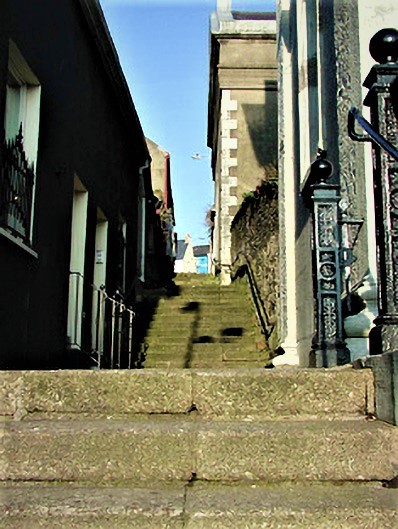
Image of Ferry Lane courtesy of the National Inventory of Architectural Heritage
In the year 1718 the widow Pope had liberty to build a Quay between Browne’s Quay and Farren’s Quay and hence was renamed Pope’s Quay. It was formerly known as North Quay prior to its redevelopment. Before the building of Patrick’s Bridge the ferries were extremely important for transporting passengers, livestock and goods across the river from North Quay to Ferry Quay. The North Channel had only one bridge to cater for the expanding butter and victualling trades located in the North side of the city. Smith’s map of 1750 shows Ferry Quay located on what was then the Coal Quay and Lavitt’s Quay combined. The size of this Quay area reflected the importance of the ferries on both the economy and citizens of Cork. The Shandon pedestrian bridge was erected near the route of the old river crossing, so the tradition of traversing the river near this point continues to this day.
1 note
·
View note
Text
Cork History | Cork County Cricket Club
by Michael Lenihan

Image 1 Cork Cricket grounds c. 1910 Michael Lenihan Collection
The first Cork Cricket Club was founded in 1849 and was located on the Mardyke. In 1873 it was decided to form a new Cricket club and a letter was circulated by W.H. Sharman Crawford outlining the terms for the new club. This project was undertaken with the help of Anderson Cooper and Thomas Hewitt. It was proposed that a new pavilion be constructed if enough life members would pay the necessary £10 subscription. Playing members could pay an annual subscription of £2 with non-playing members a subscription of £1. These fees would enable the procurement of a lease on suitable grounds to include the hiring of a professional bowler. This proved to be a resounding success and the cream of Cork society duly signed up, as can be seen from the subscription list. The following notables who subscribed were The Earl of Cork; The Earl of Bandon; Sir George Colthurst, Baronet; Sir John Arnott; W.H. Crawford Esq.; R.U.P. Fitzgerald Esq.; D.F. Leahy Esq.; R.P. Beamish Esq.; Captain Henry Crawford and Jonas Morris Esq.
A formal meeting took place at the Imperial Hotel on 4 April 1874 and the new Cricket club was named the Cork County Cricket Club. In 1903 the club hosted a famous match between the Gentlemen of Ireland verses London County which side included the legendary W.G. Grace. Although Grace did not play well on that occasion remarking “How any man could be expected to play Cricket in such beautiful surroundings?” In 1910 the Cork County Cricket Club oversaw all Cricket in the South of Ireland. The club continued to grow throughout its history and many internationals were held on the Richard Beamish grounds. The year 1970 was a decisive occasion in the history of the club as the freehold grounds were purchased for the sum of £20,000. Unfortunately a dispute arose in 2006 concerning a financial arrangement with Beamish & Crawford brewers who had secured the freehold of the grounds as an asset against a long term loan. Thankfully, a settlement was reached with Beamish & Crawford retaining the freehold and the club retaining a 150 year lease.
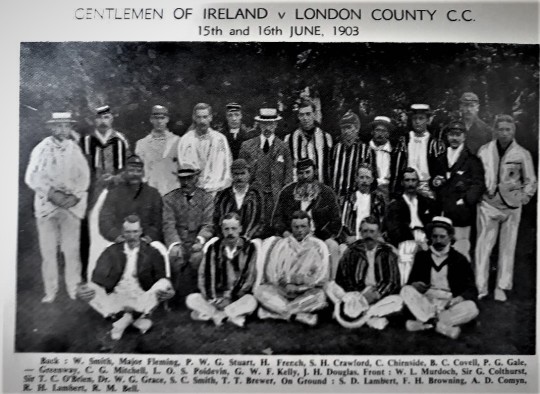
Image 2 courtesy of the Cork County Cricket Club
The current clubhouse located on the grounds replaced a two-storied pavilion which had been constructed in 1875 near the river. This proved to be unsuitable and it was demolished just 5 years later. During the 1902 Cork Exhibition and the 1903 Greater Cork Exhibition the grounds and the pavilion were utilised. The pavilion became a grandstand showing marvellous views of the cycling races and other sporting activities. This picturesque clubhouse is one of the few buildings to use corrugated iron. The wonderful large windows and veranda provide magnificent views of the grounds and beyond. In 2016 it was voted Cricket Ireland Club of the year. This beautiful clubhouse and grounds has always been a special place to visit especially during the summer months.
0 notes
Text
Cork History | An Early History of the Lough
by Michael Lenihan

Photo courtesy of Michael Lenihan
The wonderful legend of the Lough was recorded by Crofton Croker in his book Fairy Legends and Traditions of the South of Ireland, in 1824, but earlier accounts exist concerning leases, fairs, fishing and amusement. In 1695 the Corporation of Cork ordered that Aldermen Wright, Rogers and a Mr. Champion examine some grounds adjoining the Lough with a view to valuing and renting it. It proved to be a troublesome issue for the Corporation because in October 1717 Mr. Will Masters was ordered to give up his lease at the Lough under threat of legal action. Eight years later the legal wrangling continued, and the sum of £7 18s was offered to Mr. Masters upon his surrendering the lease and the legal costs were fixed at 30s. By 1727 trespassing had become a vexatious issue and representatives of the Corporation were sent to the Lough in order to issue a report and threaten the offenders. A Decree was issued stating that “All black cattle that stood on or about this land, in order to cool for slaughtering shall pay one penny for every head and a halfpenny for every pig or sheep.”
The contentious issue of people digging up the ground and carrying away enormous amounts of soil occupied the corporation for many more years. Even members of the established church had their eyes on this important piece of land. In 1770 Dean Chinnery had built a wall and taken in ground that was not belonging to him and he was forced to take a lease on this particular plot of land.
The issue of having two fairs near the Lough was investigated as early as 1733. In later years it was recommended that three fairs be held which would generate much needed revenue for the city. By 1743 it was discovered that the Lough had been totally over fished by the overuse of fishing nets. In order to conserve the remaining fish stocks, it was ordered that “no person shall fish with any net or nets in said Lough.”
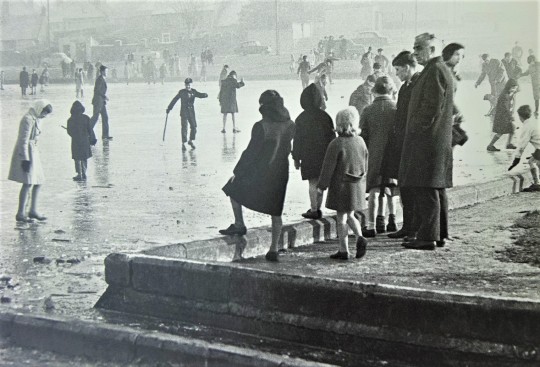
Photo courtesy of Irish Examiner
The Lough was not just a place of commerce, but it was for amusement as well. When the Lough froze there was no place to equal it for sport in Cork. On 2 January 1767 the frost had become so severe that the Lough froze solid and skating became a popular pastime. The cold became so severe that many poor tradesmen could not work and because they had nothing better to do, went to the Lough and amused themselves by skating. After two weeks the roads became impassable as the snow was seven or eight feet deep in parts. A century later there were many newspaper accounts of skating on the Lough including some near tragedies when the ice broke, and the skaters were hurled into the frozen lake. Because of the seasonal nature of the sport there were many injuries, such as broken limbs and severe bruising. This was the order of the day and many of the local hospitals had more than their fair share of ice casualties. The Lough continues to be a safe haven for people to walk.to this day. It is an important nature sanctuary for animals, birds, fish and a tranquil oasis not far from the hustle and bustle of the city centre.
1 note
·
View note